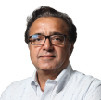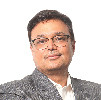As part of the #PMAR2020 H1 launch event, a power-packed panel of top industry leaders discuss how to come out of the aftermath of the COVID-19 crisis and maximise impact of advertising during the festive season in 2020
At the virtual unveiling of the Pitch Madison Advertising Report H1, 2020, top industry leaders presented their views on how to maximise impact of advertising during the festive season this year.
The participants of the discussion were Amit Syngle, MD & CEO, Asian Paints; Rohit Gupta, President, Sony Pictures Networks India; Kunal Bahl, Co-founder & CEO, Snapdeal; Shailesh Gupta, Director, Jagran Prakashan Limited and Avinash Pandey, CEO, ABP Network, and it was moderated by Vikram Sakhuja, Partner & Group CEO, Madison Media & OOH.
Speaking about the impact of COVID-19 and how the e-commerce business has bounced back, Kunal Bahl said, “I do feel this will continue to be a volatile year where we’ll have moments of euphoria and moments of pain, followed by more moments of euphoria and pain and it’ll take some time before all of this probably stabilises nicely.
At least from the online retail, e-commerce standpoint, they were down to zero for a couple of months, probably starting end-March going until mid-May. Thereafter, we saw a very sharp recovery where e-commerce companies were reporting anywhere from 100-140% of pre-lockdown volumes by July.
A lot of our sellers and brands on marketplaces are depending very significantly on e-commerce to drive their sales and make up for loss during the festive season this year. My current view is cautiously optimistic, I won’t call it undeniably optimistic, I won’t call it pessimistic for sure.”
“Advertising is not like an on and off switch, you can’t switch it on as and when you want. It takes a lot of time to get back to where you work, in terms of brand salience and conveying brand message.”
Amit Syngle
MD & CEO, Asian Paints “Volumes of TV advertising are currently back up. TV is strong and we are anticipating that it will make a comeback. The accountability that comes through TV advertising is the strongest.”
“Volumes of TV advertising are currently back up. TV is strong and we are anticipating that it will make a comeback. The accountability that comes through TV advertising is the strongest.”
Rohit Gupta
President, Sony Pictures Networks India “We saw a very sharp recovery where e-commerce companies were reporting anywhere from 100-140% of pre-lockdown volumes by July. A lot of brands are depending very significantly on e-commerce to drive their sales.”
“We saw a very sharp recovery where e-commerce companies were reporting anywhere from 100-140% of pre-lockdown volumes by July. A lot of brands are depending very significantly on e-commerce to drive their sales.”
Kunal Bahl
Co-founder & CEO, Snapdeal “Local advertisers advertise to earn, they advertise for action. They don’t care about brand building. For UP, Bihar and Jharkhand, June and July have been a classic case, where local advertisers have come in abundance.”
“Local advertisers advertise to earn, they advertise for action. They don’t care about brand building. For UP, Bihar and Jharkhand, June and July have been a classic case, where local advertisers have come in abundance.”
Shailesh Gupta
Director, Jagran Prakashan Limited “Please be innovative, strive to create high impact because that will reduce the inventory, draw attention to the brand and it will also help you sell more.”
“Please be innovative, strive to create high impact because that will reduce the inventory, draw attention to the brand and it will also help you sell more.”
Avinash Pandey
CEO, ABP Network “This is not the time to think marketing as a cost but marketing as an investment. It’s important right now for all marketers to remember that demand creation is their job and this is the opportunity.”
“This is not the time to think marketing as a cost but marketing as an investment. It’s important right now for all marketers to remember that demand creation is their job and this is the opportunity.”
Vikram Sakhuja
Partner & Group CEO,Madison Media & OOH
TIER 3, TIER 4 MARKETS LEAD RECOVERY
Amit Syngle said, “Our category is close to the discretionary category because you can always put off painting and can look at deferring that to some other time. Most of April was a washout for us and we started getting back into shape in the month of May.
Given the fact that we have huge plants across the country, it’s not really easy to stop and restart chemical plants. It came with its own kind of problems. But the way we dealt with it, the good part was that we were anyway steering on a large inventory we had because we closed a little bit abruptly in March.
We had good materials with us in terms of fulfilling the pent-up demand in the market. The real focus which we maintained was looking at the entire Tier 3 and Tier 4 market in May-June because these cities weren’t as badly affected as the Metros.”
Talking about the comeback of the Print supply chain, Shailesh Gupta said, “As far as supply chain or circulation is concerned, in our area of operations that is the North, our circulation was affected in May and June and the affected quantum was not more than 40%.
So we were still doing circulation of about 60-65%, but slowly our circulation now has come back to 80-85% of pre-COVID times. The rest 15-20%, we are still affected because of our NCR markets - Gurgaon and Delhi.
The effect on newspaper circulation mainly happened in Metro cities. In fact, in the entire COVID-19 time, newspapers played a crucial role for citizens because they were actually getting the local information they wanted, which was in and around where they live.”
Rohit Gupta stated that no other medium is as accountable as Television. “Volumes of TV advertising are currently back up. TV is strong and we are anticipating that it will make a comeback. The accountability that comes through TV advertising is the strongest as compared to other mediums.
Digital is growing but many brands are going away from Digital as there is no accountability in Digital media,” he said.
NEED TO BE ON THE FRONT FOOT
Avinash Pandey commented on the sudden growth of news channels during the lockdown period and also highlighted the reason why it was difficult for news broadcasters to retain the position after the lockdown: “People in Bihar and UP are consuming and seeing things differently as compared to people in Metros.
The problem with news broadcasters is two-fold, one on the supply side and the other on the demand side. Firstly, we were too many. Secondly, most of us were chasing the same story, so there was not so much differentiated content available though people wanted more.
Thirdly, there was not so much of demand in April and May; because of that, FMCG companies were the only ones chasing the advertising inventory. Thus, it created pressure on the advertising sale side to sell,” Pandey said.
According to Syngle, if you are always waiting and watching what the game is and then reacting, half of the game is lost. “I strongly believe that you need to be on the front foot in terms of looking at adapting to the situation rather than watching your bottomline to see what really happens, then playing your cards,” he observed.
Commenting on the psychology of advertisers and what it takes to stimulate consumer spending, Syngle said, “We felt very clearly that advertising is not like an on and off switch, you can’t switch it on as and when you want.
It takes a lot of time to get back to where you work, in terms of brand salience and conveying brand message because these are times when consumers also kind of test you and you can’t take their loyalty for granted.
From that point of view, today’s consumers are changing dynamically. I would always pitch in favour of saying that brands which look at stimulating the demand and look at pre-empting the change which is happening and therefore, navigating in that area, would stand to gain and that is something our brand would also like to focus on.”
Saying that we are in an extraordinary environment, Bahl said, “Now advertisers are very conscious of their advertising spends and keep a sharp eye on ROI from advertising across mediums. This will be a guide for future advertising calls.”
BE INNOVATIVE, THINK DIFFERENT
Highlighting local advertisers’ approach and how Tier 2 and Tier 3 markets remained undisrupted as compared to Metro cities, Shailesh Gupta said, “Local advertisers advertise to earn, they advertise for action. They don’t care about brand building.
If we talk about UP, Bihar and Jharkhand, June and July have been a classic case, where these local advertisers have come in abundance. And they have only repeated their advertising because they were getting their returns either through home deliveries or calling people to their shops.
Life in Tier 3 and Tier 4 and even in Tier 2 (Kanpur and Lucknow) markets hasn’t been as normal as it could be. Dealers or retailers of a sari shop or a kirana store, they are all advertising. We need to go back to the basics as these are not normal times. So you need to think innovatively and differently. You have to rediscover things in a newer way.”
Avinash Pandey advised marketers and media personalities to be innovative. “Please be innovative, strive to create high impact because that will reduce the inventory, draw attention to the brand and it will also help you sell more,” he said.
Rohit Gupta asked marketers to keep it simple, “Keep it simple. Brands take a long time to be built, so brand association is key; you’ve to see what brand associations will work best for you and that’s the way forward. The upcoming festival season will be cluttered and brands should find a way to stand out in the crowd.”
Concluding the discussion, Vikram Sakhuja said, “It’s clear that this has been a very unprecedented year. We actually can get a pretty high range of growth, a lot of which will be dependent on the months to come. Also, I think this is not the time to think marketing as a cost but marketing as an investment.
It’s important right now for all marketers to remember that demand creation is their job and this is the opportunity. We have an optimistic and buoyant kind of Indian population and there are pockets of pain but there are large tracts of lands in the country, which are doing fine. So choose your battle field, go regional, go smart and actually spend well and you’ll get great returns.”






















